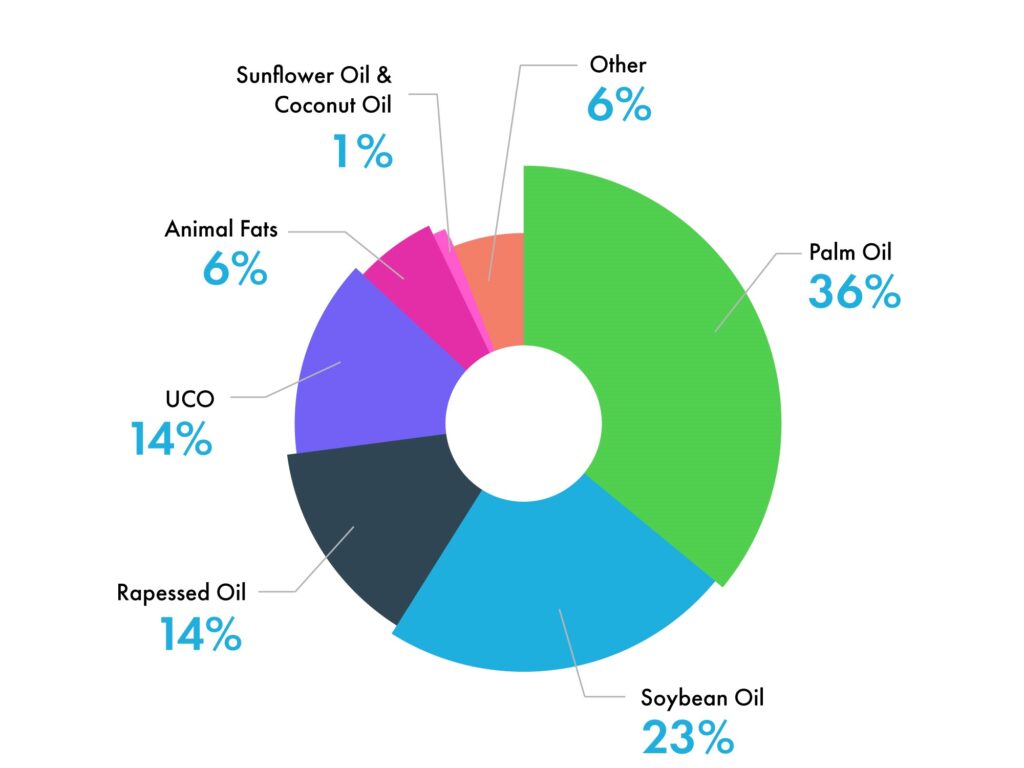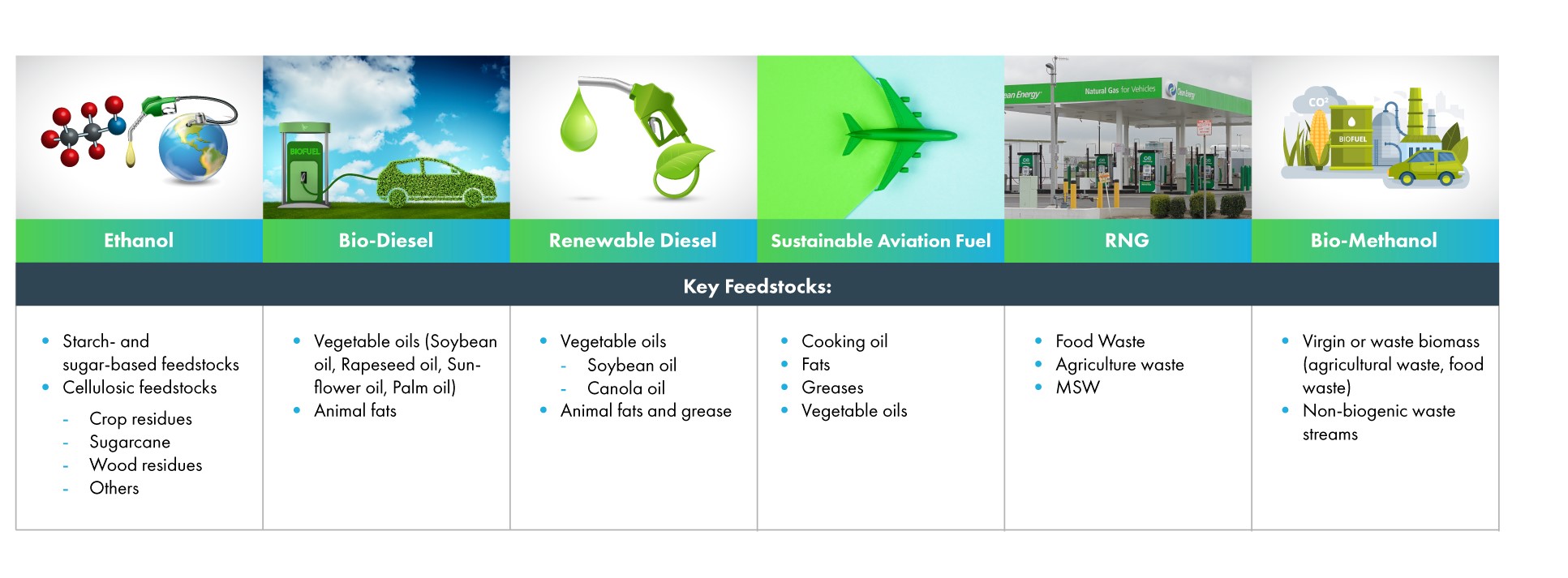By Vidhi Shukla and Ruella Menezes
As the world grapples with the pressing need to mitigate climate change, the search for sustainable energy solutions has intensified. Among the various alternatives to fossil fuels, biofuels have emerged as a promising option. But the question remains: Are biofuels merely a low-hanging fruit, offering easy but limited benefits, or are they a genuine solution to industry decarbonization? In this blog, we explore the potential of biofuels, examining their benefits, challenges, and their role in the future of sustainable energy.
Understanding Biofuels
Biofuels are renewable energy sources derived from biological feedstocks such as corn, algae, or organic waste. These organic feedstocks typically have some quantity of carbon (CO2) uptake during their growth cycle. Or, in the case of organic waste, they are processed into fuel instead of digesting in a landfill and off-gassing greenhouse gas emissions. This carbon offset enables biofuels to have a lower carbon footprint throughout their entire lifecycle compared to traditional fuels.
Historically, biofuels were commonly produced using first-generation feedstocks like vegetable oils. However, there is now growing interest in second-generation feedstocks such as animal fats and used cooking oil (UCO), which offer lower carbon intensity compared to their first-generation counterparts. The Low carbon intensity factor is the key reason why these second-generation feedstocks are increasingly being pursued and are becoming the new standard for biofuel production today.
Figure 1.0 Global Biodiesel feedstock distribution by type (%)

Use case of Biofuels
Biofuels are well-recognized for their role in the automotive industry, but their potential extends far beyond cars and trucks. These versatile fuels are emerging as viable solutions for several hard-to-abate sectors.
Consider renewable diesel, also known as hydrotreated vegetable oil (HVO). This fuel is gaining traction as a potential solution in hard-to-abate sectors such as aviation and marine applications. Another exciting development is the alcohol-to-jet technology, which converts ethanol into jet fuel. This innovation is opening new pathways for the aviation sector to tap into, offering a greener alternative to traditional jet fuels.
And the examples don’t stop here. From powering ships to fueling industrial processes, biofuels are proving to be an important solution in the quest for decarbonization across multiple sectors. Every day, new and intriguing use cases for biofuels are being discovered. One interesting example is that of Bharat Aluminium Company Limited (BALCO), who successfully conducted trial runs for using biodiesel in its smelter operations in Korba, Chhattisgarh, India. In the pilot test, BALCO used biodiesel for preheating ladle vehicles that carry molten aluminum.
Biofuels: A real solution or not?
One of the key reasons why the industry struggles to believe in the promise of biofuels is the concern over feedstock availability. A key question raised by everyone is, “Is there enough feedstock to address the demand today?” Unfortunately, the answer is no. Many customers perceive biofuels as a temporary, low-hanging fruit rather than a permanent solution, primarily due to these feedstock limitations. What makes matters worse is we see competition for the same feedstock from different versions of biobased fuels options. (see figure 2.0).
Figure 2.0 Feedstock demand by different bio-based fuels

With the demand for various bio-based fuels increasing, the question arises: do we have sufficient feedstock to meet this demand?
Further, the source of bio-feedstocks is also a significant concern. Today, over 70% of biodiesel feedstock comes from first-generation sources such as palm oil, soybean and rapeseed oil. These first-generation feedstocks compete with food production and raises ethical concerns, particularly when food security is a global issue.
In terms of second-generation feedstocks, used cooking oil is gaining a lot of attention today, with China being one of the largest exporters. However, the supply of used cooking oil is limited, and industries can only tap into a finite amount. Moreover, there is a possibility that countries may restrict the export of used cooking oils or any other feedstocks and prioritize their own domestic needs first.
These challenges highlight the need for innovative solutions and sustainable practices to ensure that biofuels can be a viable long-term solution for reducing carbon emissions.
So, what’s the solution?
For biofuels to be a sustainable and long-lasting solution to our energy needs, the issue of feedstock availability must be tackled head-on. Currently, several companies are exploring non-edible, novel feedstock options such as jatropha, mahua, camelina, and many others. Kline, with its extensive expertise in novel feedstock screening, is at the forefront of identifying these new feedstock sources for clients and helping companies to understand how they can scale their supply of biofuels.
What’s particularly noteworthy is that several customers are no longer open to simply observing from the sidelines. They are increasingly willing to engage directly in the feedstock value chain, contributing to the development and scaling of these resources. This proactive involvement is a positive sign that, over time, we can address the immediate concerns about the sufficiency of biofuel supplies to meet growing demand.
Enjoyed this article? Subscribe to our newsletter for more articles like this. Sign up here!

